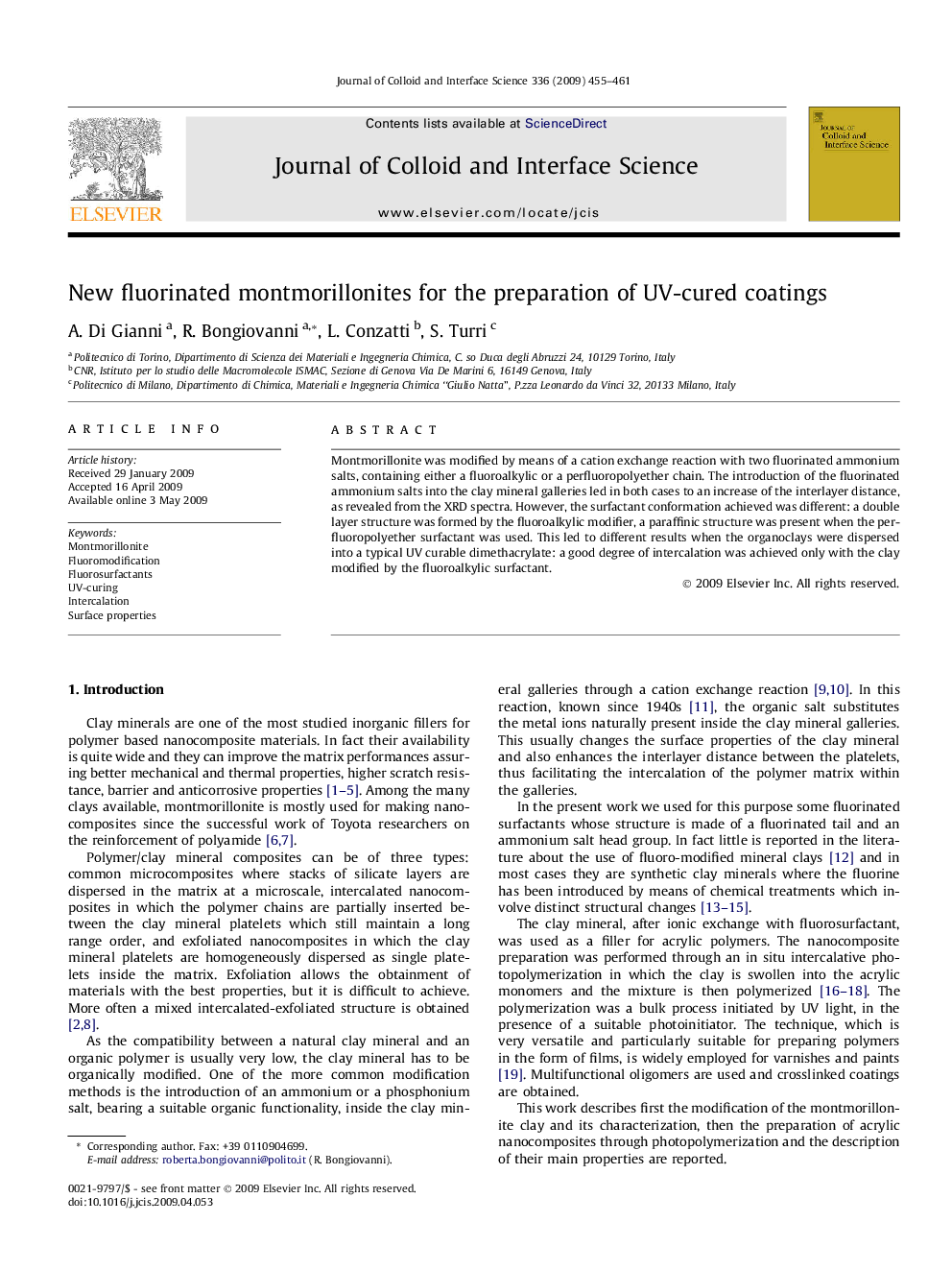| Article ID | Journal | Published Year | Pages | File Type |
|---|---|---|---|---|
| 610150 | Journal of Colloid and Interface Science | 2009 | 7 Pages |
Montmorillonite was modified by means of a cation exchange reaction with two fluorinated ammonium salts, containing either a fluoroalkylic or a perfluoropolyether chain. The introduction of the fluorinated ammonium salts into the clay mineral galleries led in both cases to an increase of the interlayer distance, as revealed from the XRD spectra. However, the surfactant conformation achieved was different: a double layer structure was formed by the fluoroalkylic modifier, a paraffinic structure was present when the perfluoropolyether surfactant was used. This led to different results when the organoclays were dispersed into a typical UV curable dimethacrylate: a good degree of intercalation was achieved only with the clay modified by the fluoroalkylic surfactant.
Graphical abstractPristine sodium montmorillonite was modified by two fluorosurfactants, obtaining an enlargement of the basal spacing (PFPEsurf is a quaternary ammonium salt containing a perfluoropolyether chain, while Masurf has a fluoroalkylic chain).Figure optionsDownload full-size imageDownload as PowerPoint slide
